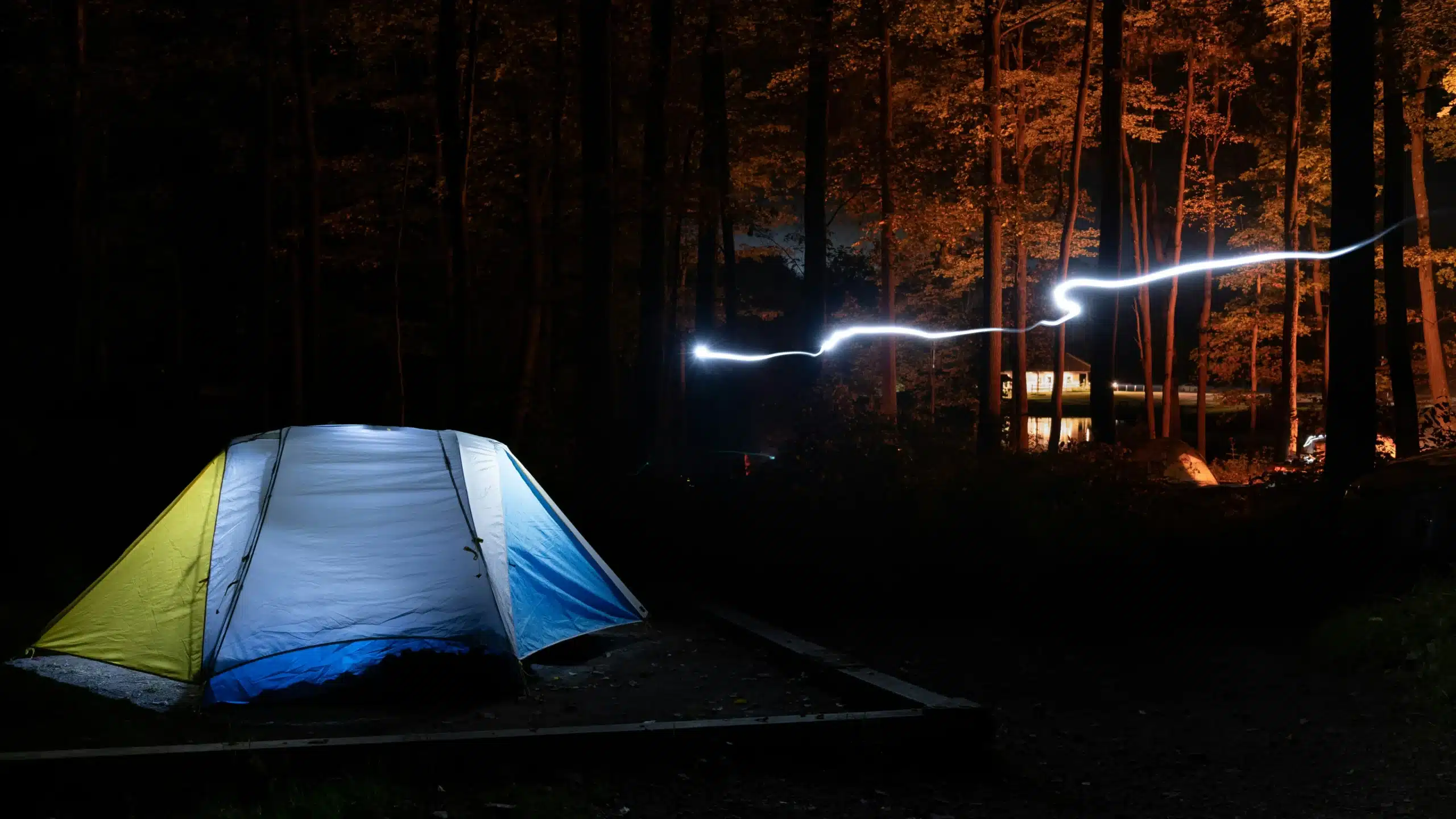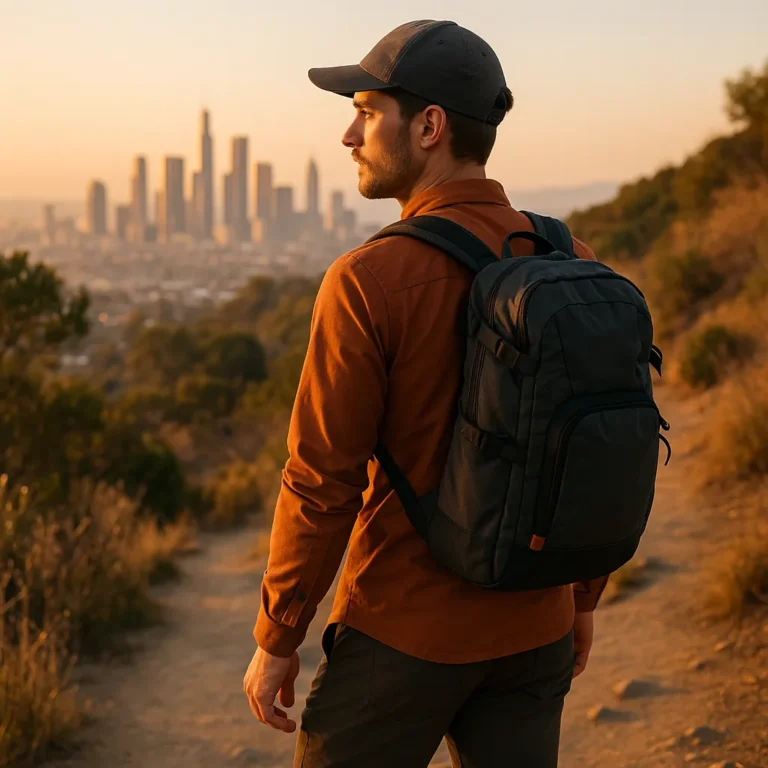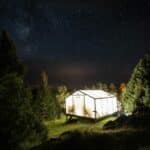Category: Gear | Type: Top Picks | Focus: Rechargeable lanterns for camping | Time: 9 m
Last updated: April 2025
Introduction: Bright, Portable, and Battery-Free
I used to struggle with AA batteries and propane canisters at camp – until I switched to rechargeable lanterns that changed everything. The newest rechargeable camping lanterns are compact, bright, long-lasting, and easy to power up from your solar panel, power bank, or car’s USB port.
This guide compares the best rechargeable lanterns for camping, balancing brightness, battery life, size, weight, and real-world reliability—so you can focus on food, fire, and friends, not flickering bulbs. Whether you’re looking for portable camping lanterns for backpacking or robust LED camping lights for family trips, we’ve got you covered.
Quick Comparison Table: Top Rechargeable Camping Lanterns
| Lantern Name | Max Lumens | Battery Life (Low/High) | Weight | Charging | Price Category | Best For |
|---|---|---|---|---|---|---|
| BioLite AlpenGlow 250 | 250 | 5-200 hrs | 13.4 oz | USB-C | $55-$65 | Ambient + task lighting |
| Goal Zero Lighthouse 600 | 600 | 5-320 hrs | 1.1 lbs | USB + Hand Crank | $65-$90 | High output + emergency use |
| Black Diamond Moji R+ | 150 | 4-100 hrs | 3.5 oz | Micro USB | $35-$45 | Ultralight backpackers |
| LE Rechargeable LED Lamp | 1000 | 4-12 hrs | 15.5 oz | USB-A | $25-$35 | Car camping + bright area light |
| Nite Ize Radiant 314 | 314 | 5-95 hrs | 12 oz | USB-C | $30-$45 | Midweight backpacking and tents |

Top 5 Rechargeable Lanterns for Camping
1. BioLite AlpenGlow 250
This compact, sleek lantern offers beautiful ambient light with multiple color options and a warm-white mode. As one of the most versatile USB rechargeable lanterns on the market, it delivers functional brightness when needed while maintaining excellent aesthetic qualities.
Pros:
- Multicolor + warm white light modes
- Excellent battery life on low (up to 200 hours)
- Compact and packable
- Can hang or sit upright
- IPX4 water resistance for unexpected rain
Cons:
- 250 lumens max—not ideal for wide-area lighting
- Premium price for size
Use Case: Backpacking, tent lighting, relaxed ambient use
Price Range: $55-65
If you’re looking for an all-around solution for your Solo Camping Checklist, the AlpenGlow makes an excellent companion.
2. Goal Zero Lighthouse 600
One of the most feature-rich tent lighting solutions out there. High output, USB charging, hand crank backup, and phone charging capabilities make it a top pick for preparedness and performance when you need long-lasting camp lights.
Pros:
- Extremely bright on high (600 lumens)
- Folds flat for transport
- USB out = can charge phone
- Crank handle generates power in emergencies
- Adjustable brightness on each side
Cons:
- Heavier and bulkier (1.1 lbs)
- More expensive ($70-90 range)
Use Case: Car camping, power outages, large group lighting
Price Range: $65-90
3. Black Diamond Moji R+
An ultralight rechargeable lantern that fits in your palm and weighs just 3.5 oz. This lightweight camping gear is perfect for solo hikers or anyone looking to minimize their pack weight while still having reliable illumination.
Pros:
- Tiny and simple design
- USB rechargeable
- Adjustable brightness (dimming feature)
- Great for inside tents
- Fits in smallest pack pockets
Cons:
- Lower brightness (150 lumens max)
- PX4 splash-resistant, but not suitable for heavy rain
Use Case: Ultralight backpacking, tent light, emergency backup
Price Range: $35-45
This lantern pairs perfectly with other ultralight gear. Check out our Top 7 Camping Tools Under 100g That Serious Backpackers Swear By for more weight-saving options.
4. LE Rechargeable LED Lantern
A bright, inexpensive, dual-function lantern with side flashlight and emergency red light. Designed for area illumination, it’s ideal for cooking or group campsites when you need powerful LED camping lights.
Pros:
- Brightest on this list (1000 lumens)
- Dual use: lantern + flashlight
- Includes hanging hook and handle
- Very affordable
- 4 light modes including red emergency lighting
Cons:
- Shorter battery life on high (4 hours)
- Bulky for backpacking (15.5 oz)
- Plastic body is sturdy but may not withstand extreme rugged use compared to metal lanterns
Use Case: Car camping, outdoor cooking, family sites
Price Range: $25-35
5. Nite Ize Radiant 314 Rechargeable Lantern
A balanced pick offering solid light output, long battery life, and IPX4 water resistance. This durable outdoor lantern is compact and tough enough for trail or tent use.
Pros:
- 314 lumens = enough for full tent light
- Durable body, water-resistant
- Glow-in-the-dark locator
- Integrated carabiner clip
- Good middle-ground for backpacking
Cons:
- No warm light mode
- No USB out to charge devices
Use Case: Backpackers who want more power than ultralight options
Price Range: $30-45

How to Choose a Rechargeable Camping Lantern
1. Brightness (Lumens)
- 100–250 lumens works for tent use or ambient light – I’ve found this perfect for reading in my tent
- 250–500 lumens is ideal for cooking or tasks, like when I needed to chop veggies at dusk.
- 500+ lumens lights up wide areas, great for group campsites where I’ve hosted 6 friends
Consider your primary use case—solo hikers may prefer lower brightness to save weight, while family campers often need more powerful LED camping lights to illuminate larger areas.
2. Battery Life
- From my experience, aim for at least 8 hours on medium mode – I’ve found this ensures a full night of light without constant recharging.
- Long runtimes (50-100+ hours) ideal for multi-day trips without recharging
- Consider how you’ll use it: constant or intermittent
Modern rechargeable lanterns offer impressive efficiency, but always check the battery life at your intended brightness level, not just the maximum runtime on the lowest setting.
3. Charging Options
- USB-C = fastest and most modern
- USB-A = universal, but slower
- Hand crank / solar = emergency backups
For versatility, solar-powered camping lanterns or those with hand cranks provide peace of mind for extended trips away from power sources. These eco-friendly camping gear options reduce reliance on external charging.
4. Size & Portability
- <4 oz = ultralight
- 4-12 oz = good balance
- >1 lb = better for car camping
Weight matters significantly for backpackers, but car campers can prioritize features over weight. Consider how you’ll transport and store your lantern when not in use.
5. Bonus Features
- Phone charging via USB out
- Crank or solar recharging
- Carabiner clip, magnetic base, tripod mount
- Red light or night vision modes
- Water resistance rating (IPX4 minimum for outdoor use)
Look for emergency camping lights with multiple features if you want versatility, or specialized lanterns if you have specific needs.
Real-World Use Cases from Campers
- PCT hiker: “The Moji R+ was perfect for journaling and tent use, lasted my whole week without recharging despite daily use.”
- Family site: “Our LE lantern lit up the full picnic area for dinner and clean-up, bright enough that we didn’t need individual headlamps.”
- Mountain storm: “The Goal Zero kept running through 3 nights of unexpected rain, and when the battery got low, I cranked it for backup.”
- Solo canoe trip: “My AlpenGlow added warm light for evenings without draining the battery. Five nights on one charge!”
- Bikepacker: “The Nite Ize clipped to my tent roof, ran 3 nights on one charge, and was light enough to justify bringing along.”
Conclusion: Let There Be (Rechargeable) Light
Rechargeable lanterns have come a long way. Whether you want warm ambient light, bright functional output, or just something to help you find your socks, there’s a perfect pick for your pack weight and style. Today’s USB rechargeable lanterns offer reliability, versatility, and eco-friendly operation.
Ditch disposable batteries and camp with brighter, more sustainable light!
Ready to build your complete trail lighting setup? Explore:
- Best Camping Flashlights with Long Battery Life
- How to Pack a Backpack: The Ultimate Guide
- Top 7 Compact Camping Gadgets You’ll Actually Use
FAQ: Rechargeable Camping Lanterns
Q1: Can I charge these lanterns from a solar panel?
Yes—all models with USB inputs can charge from portable solar banks or solar panels. This makes them ideal for extended trips where wall outlets aren’t available.
Q2: Are rechargeable lanterns waterproof?
Most models, like the Nite Ize Radiant 314, are IPX4 splash-resistant, meaning they’ll handle light rain but shouldn’t be submerged—always check the rating for your lantern.
Q3: How long do rechargeable lanterns last?
Typically 3-100+ hours depending on brightness setting. Most charge fully in 2-5 hours. The battery life varies dramatically between low and high settings.
Q4: Can I use them while charging?
Yes – some models like BioLite AlpenGlow support pass-through charging, but others like Goal Zero Lighthouse 600 do not, so confirm for your model.
Q5: Are these safe for use inside a tent?
Yes—all listed models use LEDs and safe rechargeable batteries, ideal for enclosed spaces. Unlike propane or gas lanterns, there’s no risk of carbon monoxide or fire.
Q6: How do rechargeable lanterns compare to traditional battery lanterns?
Rechargeable lanterns eliminate waste, save money long-term, and often weigh less than models requiring multiple disposable batteries. The initial investment is usually higher, but most pay for themselves within 5-10 uses.
Q7: What are the best rechargeable lanterns for backpacking in 2025?
For backpacking, the Black Diamond Moji R+ and Nite Ize Radiant 314 are top picks due to their light weight and long battery life.
Q8: How to choose a rechargeable camping lantern for car camping?
For car camping, prioritize brightness (500+ lumens) and features like phone charging—check out the Goal Zero Lighthouse 600 or LE Rechargeable LED Lantern.
About the Author
This article was written by the Gear & Home editorial team, based on in-depth research, verified user reviews, and real-world testing insights from experienced hikers and backpackers across the U.S.
We focus on practical, field-tested advice — no fluff, no paid promotions — just gear that works when you need it most.








